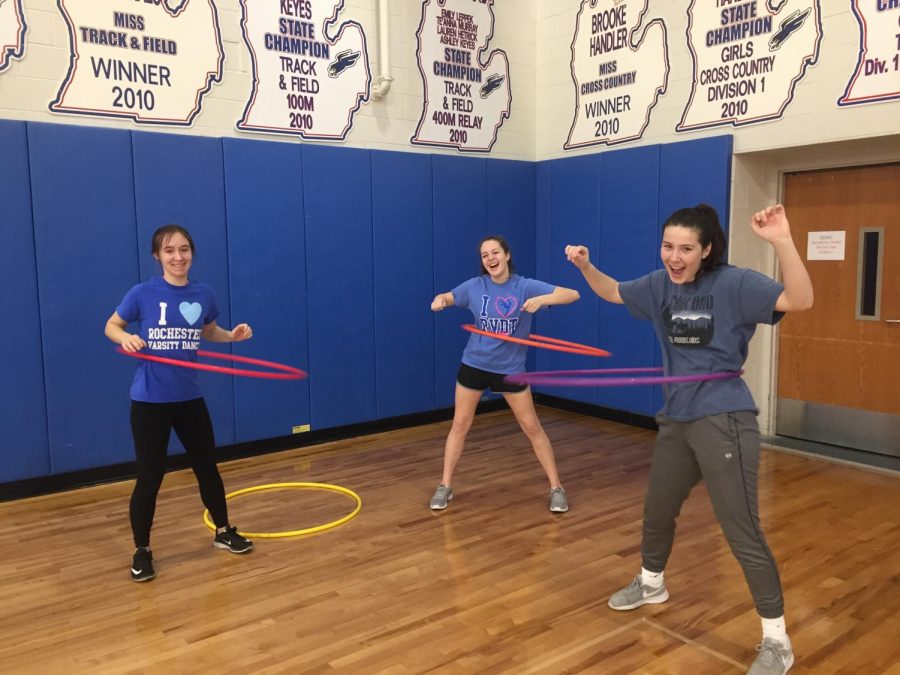Gym Class
Why Rochester students need more physical activity
February 15, 2019
I was surprised last spring when my 5th grade sister came home with her scheduling card for 6th grade. What struck me was that gym class was not a required course for 6th graders, and instead was an elective. Being a competitive and talented athlete, my sister naturally chose gym as one of her electives, but I couldn’t help but wonder how many middle schoolers in our district were going to be absent from a physical education class the next year due to it being loosely required in RCS’ secondary education. Physical activity plays an influential role in physical, mental and emotional health, and should be more strictly mandated in RCS’ secondary education.
In RCS, 7th graders are required to take half a year of gym class and high schoolers are required to take one semester of a physical education course. That totals one school year’s worth of required physical activity over the course of seven years. High school students also have to option to opt out of their gym credit by participating in a season of a school sport or a semester of marching band, contributing to even fewer students taking gym class each year.
There is no doubt that Americans don’t get enough physical activity. The United States is the leading country in the world for childhood obesity. To combat this issue, the Centers for Disease Control and Prevention and the Physical Activity Guidelines for Americans recommend that all children and adolescents get at least 60 minutes of exercise a day. However, the majority of children in the United States do not lead lifestyles that lend to this. In this day and age, the use of technology is climbing dramatically. Common Sense Media reports that American teens spend nine hours a day using digital electronics, and tweens (ages 8-12) spend six hours a day. This is especially troubling since as hours rise using technology, hours spent doing physical activity drops.
It is proven that establishing healthy habits at a young age increases the probability that one will continue to lead a healthy lifestyle later in life. Therefore, if students are stationary during the entire school day, then again at home, they have a very low chance of exercising regularly as an adult. This would further contribute to America’s current obesity problem.
Being physically fit is important for people of all ages, but especially teenagers. In elementary school, students have gym class twice a week and at least one recess a day. These parts of the day are there mostly there to let the young kids get out their energy and get exercise. However, when students are growing into adults and their bodies are developing and changing, exercise plays a new role in their lives that is beyond energy release.
The mental and emotional aspects of exercise are even more important for teen and pre-teens than it is for young children. As school gets more intense and pressures from parents, colleges, and teachers rises, it is ridiculous to remove gym class requirements from schools, as this course may very well be their only positive way to relieve their stress. The John Hopkins Health Review states that in the past decade, clinical depression and anxiety in children aged 12-17 has risen. Meanwhile, in a biennial survey of high school students in the United States, the Centers for Disease Control and Prevention reported that half the students had no gym classes in an average week. In the same CDC report, 20.5 percent of New York City high school students didn’t have gym class in an average week, when 10 years earlier, 14.4 of students weren’t in gym classes.
The correlation between higher depression rates and lower emphasis on exercise in schools is clearly evident. The Anxiety and Depression Association of America states that exercising can reduce stress, anxiety, relieve depression, strengthen self-esteem, and improve confidence. This illuminates that not only will gym class alleviate America’s obesity problem, but will also work to improve the mental health crisis our country is faced with as well.
Many children participate in organized sports, but a study by the National Alliance for Youth Sports revealed that 70 percent of American kids quit sports by the age of 13. Whether this trend is because of time, money, or loss of interest, it reveals that the overwhelming majority of teens are simply not getting the exercise that they need outside of school. Therefore, it should be the responsibility of American public schools to ensure that all students are physically healthy.
Gym classes have been stereotyped to be an embarrassing and degrading experience for students who don’t have natural athletic abilities. The reality, however, is that RCS offers a variety of physical education courses for students. From aerobics to team sports, students have many options to pursue their physical activity. Furthermore, the gym teachers at RHS for instance are also acclaimed varsity coaches and certified health teachers. Therefore, they can provide information and advice to students who are seeking to lead a healthier lifestyle.
Some students enjoy physical activity, but choose to not take gym class because of college pressure to take more advanced core classes instead of multiple years of gym. There are only six hours in the RCS school day, so it is natural for students, especially in high school, to choose courses that will look stronger and more serious to colleges. However, if the district and the state choose to require gym class, more high schoolers would be keen to participate, since it evens the playing field among their peers when applying to college in that sense.
Sacrificing an hour of the school day to be in a gym class may be more beneficial than taking yet another rigorous course for some students. This is because National Center for Biotechnology Information states that physical activity improves academic performance. Their statistics also show that even a singular session of physical activity can increase brain activity, focus, and cognitive skills; especially in adolescents. For instance, The National Center for Biotechnology Information states that 11 of 14 correlated studies of physical activity during the school day demonstrate a positive relationship to academic performance, so they suggest that students are given frequent physical activity throughout the day in an effort to enhance their academic pursuits.
Clearly, gym class is a very important aspect of the school day. It positively contributes to physical, mental and emotional health for students. Gym class also serves to help some of America’s problems including obesity and depression. Meanwhile, it prepares students to lead a healthy lifestyle in the future. Therefore, it should be more strictly required in RCS’ secondary education.









